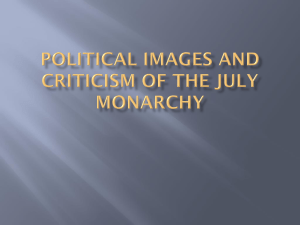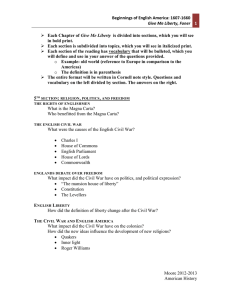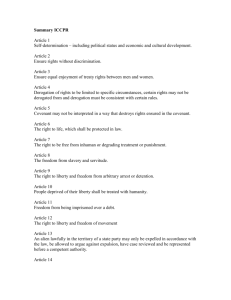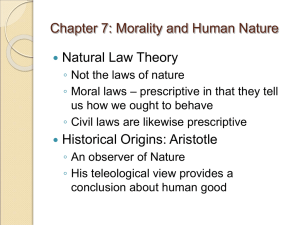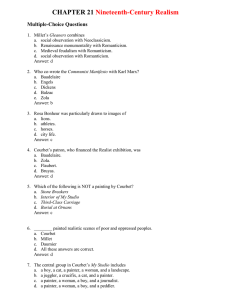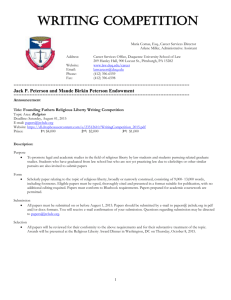Allegorical Liberty, “Citizen Kings,” and Republican Rule
advertisement
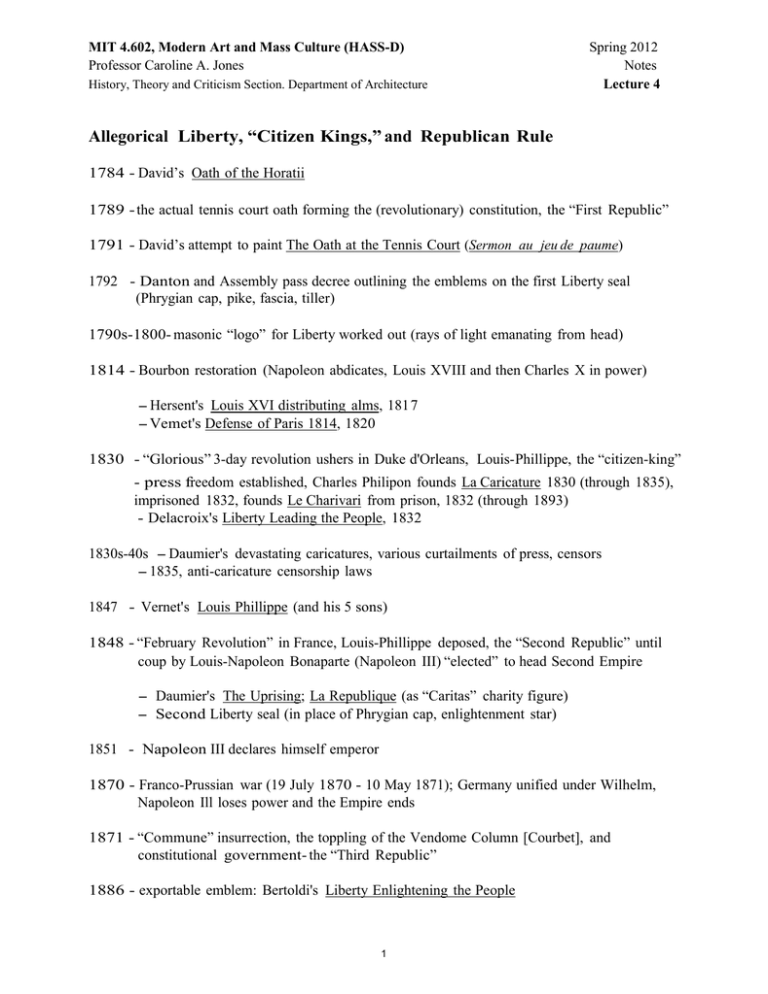
MIT 4.602, Modern Art and Mass Culture (HASS-D) Professor Caroline A. Jones History, Theory and Criticism Section. Department of Architecture Spring 2012 Notes Lecture 4 Allegorical Liberty, “Citizen Kings,” and Republican Rule 1784 - David’s Oath of the Horatii 1789 - the actual tennis court oath forming the (revolutionary) constitution, the “First Republic” 1791 - David’s attempt to paint The Oath at the Tennis Court (Sermon au jeu de paume) 1792 - Danton and Assembly pass decree outlining the emblems on the first Liberty seal (Phrygian cap, pike, fascia, tiller) 1790s-1800- masonic “logo” for Liberty worked out (rays of light emanating from head) 1814 - Bourbon restoration (Napoleon abdicates, Louis XVIII and then Charles X in power) - Hersent's Louis XVI distributing alms, 181 7 - Vemet's Defense of Paris 1814, 1820 1830 - “Glorious” 3-day revolution ushers in Duke d'Orleans, Louis-Phillippe, the “citizen-king” - press freedom established, Charles Philipon founds La Caricature 1830 (through 1835), imprisoned 1832, founds Le Charivari from prison, 1832 (through 1893) - Delacroix's Liberty Leading the People, 1832 1830s-40s - Daumier's devastating caricatures, various curtailments of press, censors - 1835, anti-caricature censorship laws 1847 - Vernet's Louis Phillippe (and his 5 sons) 1848 - “February Revolution” in France, Louis-Phillippe deposed, the “Second Republic” until coup by Louis-Napoleon Bonaparte (Napoleon III) “elected” to head Second Empire - Daumier's The Uprising; La Republique (as “Caritas” charity figure) - Second Liberty seal (in place of Phrygian cap, enlightenment star) 1851 - Napoleon III declares himself emperor 1870 - Franco-Prussian war (19 July 1870 - 10 May 1871); Germany unified under Wilhelm, Napoleon Ill loses power and the Empire ends 1871 - “Commune” insurrection, the toppling of the Vendome Column [Courbet], and constitutional government- the “Third Republic” 1886 - exportable emblem: Bertoldi's Liberty Enlightening the People 1 MIT 4.602, Modern Art and Mass Culture (HASS-D) Professor Caroline A. Jones History, Theory and Criticism Section. Department of Architecture Spring 2012 Notes Lecture 4 POST-REVOLUTIONARY FRANCE: Lecture 4: Caricature and the safehouse of “high” art The newspaper instructs us in the apparently irreducible fragmentation of daily experience, and by its normalization prepares us to live it. R. Terdiman, “Newspaper Culture.” in Discourse/Counter Discourse, 1985, p. 125. Q: does art turn political questions into social ones? (“who will lead us” becomes “what kind of people will lead us?” Socialism is born) I. Reprise: allegorical Liberty versus Republican rule- the power of imagery A. 1 785 through Revolution 1. how David preceded the revolution and mapped its embodied visual forms 2. 1792 seal: Liberty is female, neo-classical, a goddess of the people B. Images of the Bourbon Restoration (return to monarchy): 1814-1830 C. Glorious Revolution / “Orleans Restoration:”1830-1848, from Delacroix's Liberty to Daumier's Republique; (“freedom” versus l'état) 1. l'état: The State is seen by conservatives as embodied by a royal leader (Horace Vernet paintings of Louis-Philippe,1820s-1840s) 2. Liberty is embodied as Republic: allegorized as seated queen or judge, no longer military/royal but nurturant/enlightening (second Liberty seal 1848) II. Newspaper Culture/ Popular Culture/ Visual Culture- a brief span A. Before the September press laws of 1835, a free press for the first time. Prospectus for La Caricature, 1830: “Caricature has become a power;” “Engravings or lithographed images act immediately upon the imagination of the people...” 1. The visual seen as an incitement, not a “representation” 3. Daumier's “types:” the banker, the drunkard, the printer, the suffragist B. New practices of reading journalism or scanning public images C. Delineating post-revolutionary class (middle class rule) through visual culture: 1. information: organizing the mass, educating a voting populace 2. the image of the bourgeois - consumer of non-religious imagery 3. new division between Romanticist liberals, and neo-classicist conservatives (between Delacroix and Ingres) D."Mass" culture emerging at the same time as personalist philosophyKing of France vs. King of the French III. Cities and Revolution A. Paris, center and periphery 1. hotbed of professionalistn, capitalism, liberal writers, anti-clericalism, 4th estate 2. Revolutionary peripheries: source of most insurrection was actually the artisan classes and techniciens rather than an uprooted mass of rural/urban poor; B. Fears of concentration of “masses:” July Monarchy repressions curtails press, rights of association, despite fact that “masses” were not meeting or reading C. Birth of the modem state: railroads, banking, industry- striving capitalists “surrounded by a hundred factories” and their underpaid workers (images verso) 2 Images (selected) for Lecture 4 King of France versus King of the French Louis Hersent Louis XVI distributing alms, 1817 Horace Vernet The Defense of Paris 1814, 1820 Vernet, The Artist's Studio 1820-21 Vernet Portrait of Louis-Philippe at the Grand Gate (with his 5 sons) 1846-47, exhibited in the 1847 Salon Charivari! founder of Charivari, Charles Philipon, sketch for La Metamorphose du roi Louis-Philippe en poire, 1831 Honoré Daumier, “headpiece” for Le Charivari, 1833. Jean Grandville, Human and Animal Heads ca. 1836 Daumier, The Tailor, The Student, The Drunkard, The Banker, etc. 1834-35 Daumier Les Bas Bleus... (bluestocking suffragists) 1844 Daumier, Third Class Railway Carriage, (two versions) oil on panel, 1865; oil on canvas, 1862 Daumier, rue Transnonain, le 15 Avril 1834 from the publication Association Mensuelle. Aug/Sep. 1834. Daumier Gargantua, 1831 ) Daumier Le cauchemar (the nightmare), 1832 } “Le poire” Daumier The Past, Present, and Future, 1834 ) Daumier, The Legislative "Belly" 1834 Daumier, Les Avocats (The Lawvers), 1860 Newspaper Culture La Caricature (Nov. 1830-1835) Le Charivari (Philipon founds from prison in late 1832, runs 'til 93) Association Mensuelle (1833? -1834) Figaro (images of text only from 1875) Le Journal (images of increasing visuality from 1912) useful websites: www.daumier.org www.greatcaricatures.com 3 MIT OpenCourseWare http://ocw.mit.edu 4.602 Modern Art and Mass Culture Spring 2012 For information about citing these materials or our Terms of Use, visit: http://ocw.mit.edu/terms.
